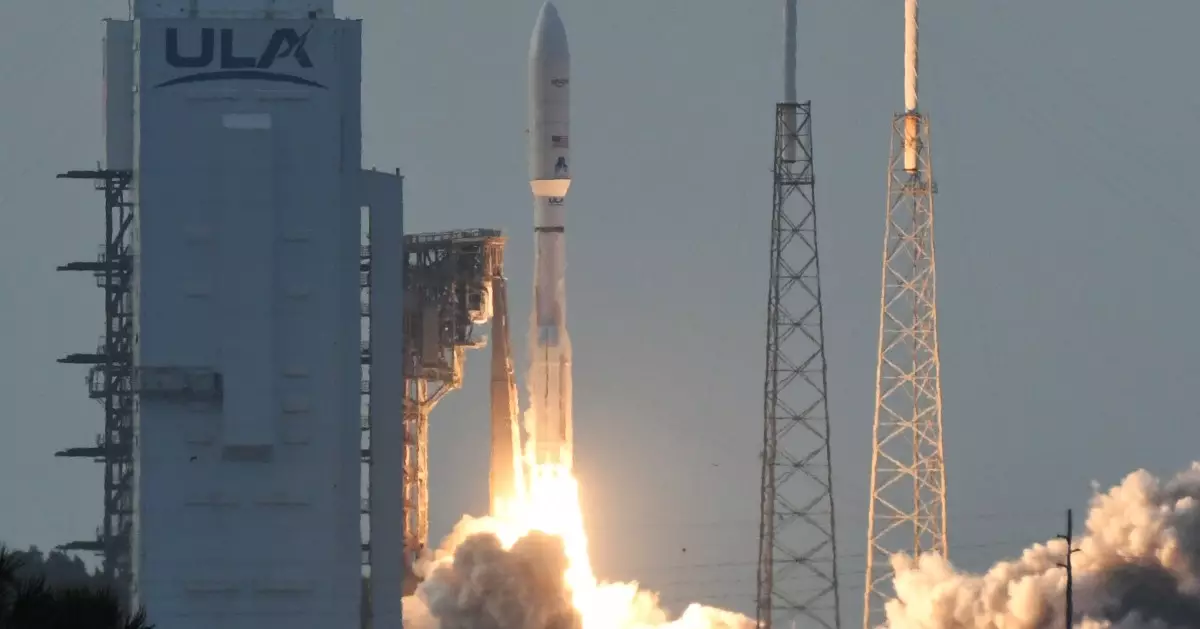The dawn of Project Kuiper marks a significant milestone in the quest for global connectivity. Amazon has deployed the first 27 satellites of its ambitious broadband project, a mere fraction of the planned 3,236 satellites intended to form a comprehensive low-Earth orbit (LEO) constellation. This initiative, while drawing inspiration from the achievements of SpaceX’s Starlink, seeks to carve out a lucrative niche in an increasingly competitive space. The deployment of these satellites is not just a technical achievement; it reflects the bold vision and ambition that Amazon has historically demonstrated across various sectors.
The recent launch, executed with United Launch Alliance’s (ULA) Atlas V rocket, took place at Cape Canaveral and was the culmination of extensive preparations. The previous launch attempt had faced delays due to adverse weather conditions, showcasing the logistical hurdles inherent in such high-stakes operations. Following a successful payload deployment into orbit 280 miles above Earth, the first batch of Kuiper satellites has not only activated but also established communication links with ground systems, much to the satisfaction of Amazon’s engineers and stakeholders.
Positioning Against Starlink: A Closer Look
Amazon’s Project Kuiper is stepping onto a battlefield dominated by SpaceX’s Starlink, which boasts over 7,200 operational satellites. The latter has proven the efficacy of satellite internet, showing how it can provide high-speed connectivity, especially in remote and underserved regions. As the two titans clamor for market share, Amazon faces the daunting task of accelerating its satellite launch cadence to meet the stringent deadline imposed by the U.S. Federal Communications Commission—you must have at least 1,618 satellites in orbit by mid-2026.
While 27 satellites are a welcome start, they are merely a drop in the ocean when compared to the global connectivity needs and the saturated market landscape. SpaceX’s recent milestone of its 50th Starlink mission in 2025, highlights its significant lead and experience in satellite launches. In fact, SpaceX is already expanding its operational capacity with regulatory approval for a staggering 34,400 satellites.
Sustainability and Accountability in the Cosmos
One compelling aspect of this burgeoning space race is the growing scrutiny over the sustainability of satellite operations. As more companies venture into the realm of satellite internet, the risk of overcrowding low-Earth orbit becomes a serious concern. The environmental implications and the potential for space debris cannot be overlooked. Amazon has a responsibility not just to its shareholders but also to the broader cosmic environment, which is beginning to show signs of strain due to increasing satellite traffic.
Moreover, the successful deployment of Kuiper highlights the need for innovative solutions in addressing these sustainability challenges. As ULA CEO Tory Bruno remarked, there is an imperative to enhance launch facilities while maximizing operational efficiency. The phrase “save lives, explore the universe and connect the world” encapsulates an idealistic vision, yet the reality necessitates a pragmatic approach to balance operational ambitions with sustainable practices.
Facing the Future: Amazon’s Strategic Moves
The stakes are remarkably high for Amazon as it seeks to position itself as a formidable contender in the satellite internet arena. Its multi-billion-dollar investment in Project Kuiper is not just about securing market share; it’s a statement of intent. During this initial phase, Amazon must effectively showcase the reliability and speed of its internet service to attract customers and foster trust.
Industry analysts will undoubtedly scrutinize every step of this satellite venture, questioning whether Amazon can outpace the established players or innovate beyond existing public perceptions. In this journey ahead, the pressure to deliver high-speed, low-latency broadband as demonstrated in promotional campaigns will define Project Kuiper’s success.
Furthermore, the competition isn’t merely limited to commercial entities; it also involves intergovernmental diplomacy, regulatory approvals, and geopolitical considerations.
Ultimately, the interplay between tech giants in low-Earth orbit could redefine global connectivity paradigms, enabling unprecedented access to digital resources for billions worldwide. As Project Kuiper unfolds, its impact will resonate far beyond Amazon’s financial statements, potentially influencing how humanity interacts with the cosmos.

